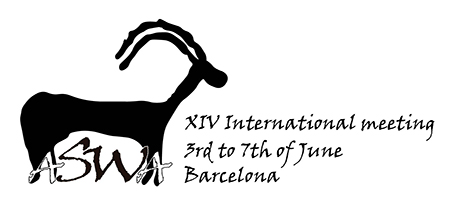Humans and hyenas were the most prominent cave users during the late Pleistocene Southern Levant. They share several common traits: top predators, social hunters and bone collectors, making their niches very similar. Their feeding preference, hunting mainly medium ungulates, could have brought them into strong competition, evidenced by the change in human diet (Orbach and Yeshurun, 2019). Consequently, the Levantine hyenids' taxonomic identity, osteological variability and dietary adaptations need to be studied and reassessed.
The majority of the late Pleistocene Levant hyenids have been identified as C. crocuta. Based on size and proportions, Kurten (1965) assigned the Levantine Crocutas to two sub-species; Crocuta crocuta dorotheae and debilis. A few specimens were identified as belonging to the Hyena genus; by Bate (1937) as a distinct species (Hyena prisca) and by Kurten as a sub-species (Hyena hyena prisca). Subsequently, mostly Crocuta and few specimens of Hyena were identified in the Levant.
A core question in the Crocuta research is when they became hunters. This question is interesting by itself as it sheds light on the ecology of an extinct population, but also bears significance for paleoanthropology. Bone remains are a lot more abundant in Pleistocene hyena dens than in recent African dens. It been suggested that since recent African Crocuta populations hunt, they collect less bones than the scavenging Pleistocene hyenas, i.e. their hunting behavior evolved recently.
Change in teeth is an excellent indicator for dietary shifts. Kurten (1965) noticed slight differences in the proportions of the front and the back teeth between European and Israeli Pleistocene hyenas. Those can be attributed to feeding adaptations, namely hunting vs. scavenging.
New excavations of several caves during the last decade yielded numerous hyenid remains, enabling us to reassess the variability among hyenids and to check Kurten's hypotheses. Zooarchaeological, taphonomic and osteological analysis of the new finds as well as the old fossils and comparative materials will help us to explore the Levant hyenid taxonomy, size variability and feeding behavior.
Reference cited
Bate, D.M.A. (1937). Paleontology: The fossil fauna of the Wadi el-Mughara caves. In: D.A.E. Garrod and D. M. A. Bate (Eds). The Stone Age of Mount Carmel. Vol. I. Excavations at the Wadi Mughara.
Kurten, B., 1965. The Carnivora of the Palestine caves. Acta Zoologica Fennica 107.
Orbach, M., Yeshurun, R., 2019. The hunters or the hunters: Human and hyena prey choice divergence in the Late Pleistocene Levant.
Journal of Human Evolution, https://doi.org/10.1016/j.jhevol.2019.01.005

 PDF version
PDF version
